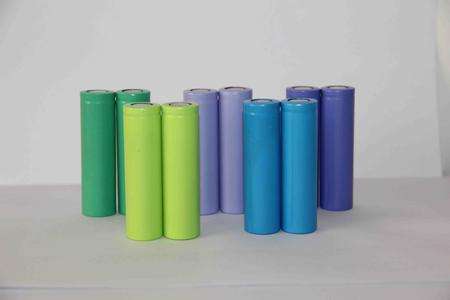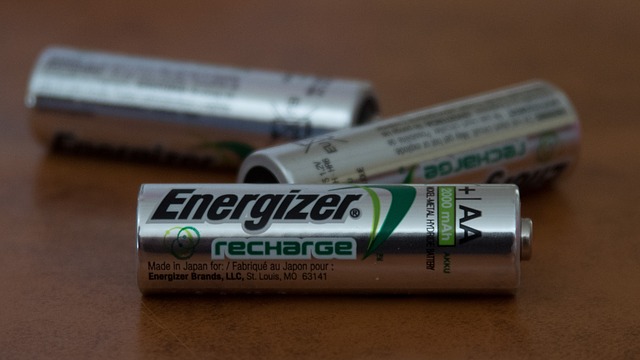What is flat rechargeable lithium-ion batteries?
Dec 18, 2019 Pageview:1278
The flat lithium-ion batteries can serve as storage for electrical energy obtained from renewable sources of energy having a variable generation rate, e.g., a solar or a wind turbine.
These batteries are sometimes made to have low self-discharge rates. What this means is that these batteries can be stored for an extended period without a significant loss of energy. The cells are fully charged straight from the factory and can be used for a lot of applications.
These flat lithium-ion cells are not only lightweight, but they also offer a high power/weight ratio. As earlier stated, they are used in various applications like in RC packs, in laptop battery repacking, and in the battery-pack of batteries for video cameras.
Flat rechargeable lithium-ion cells are applied in a variety of portable devices and instruments.
Although these cells come in a variety of capacities, they are almost the same as a button and can be applied to lots of devices. There are even some microcontrollers which draw less than a microampere, when in standby mode. This means that a 50 mAh battery can run for at least two years between charges.
These flat lithium-ion batteries may also be used in military applications, tags, sensors, as well as cards. Some come at about 2mAH per square centimeter and at a power level of about ten mA per square centimeter.
These are not just any battery; their quality is unquestionable. They are available in most shops where you can get quality batteries.?
The batteries utilize solid electrolytes, which limits the possibility of electrolyte leak, which can be hazardous both to the device in which the leaked battery is being used and to the user of the device in which the battery is being used.
The batteries can come in various sizes and shapes, and this allows for total flexibility in the design of the various device in which they can be used.
What are the chemical characteristics of flat rechargeable lithium-ion batteries?
The rechargeable Lithium-ion batteries store their chemical energy in reactive chemicals in the anodes and cathodes of the cell. It is typical of the anodes and cathodes of the cell to exchange lithium ions (Li+) within a liquid electrolyte.
In typical lithium-ion batteries, with liquid electrolytes, this electrolyte passes through a porous separator. This separator prevents direct contact between the cathode and the anode. Such contact is what causes an internal short circuit and a potentially dangerous uncontrolled reaction from the battery. The electric current in the battery is generally transported through conductive collectors. This happens on the anodes and cathodes to and fro the terminals of the cells (i.e., its negative and positive terminals).
However, this is different in a flat rechargeable lithium-ion battery. In a flat rechargeable lithium battery, the electrolyte is always solid, and there are other components that are deposited in layers on the substrate. In some batteries, these solid electrolytes serve as a separator as well.
Features of the flat rechargeable lithium-ion batteries:
Self-discharge of flat rechargeable lithium-ion battery is less than 3% per month
Processing temperatures for these cells is 100°C for less than 60 seconds, 120°C for less than 20 seconds, and 140°C for less than 5 seconds.
These batteries have zero memory effect
End-of-discharge voltage cut off 2.8 volts.
The safety characteristics of these batteries are excellent
High operating voltage(3.6V)
Charge/discharge cycle characteristics are excellent
These batteries come with very good and high energy density.
Temperature range of charging is 0-45°C, discharging is -20 to +60°C
Advantages and Challenges
The flat rechargeable lithium-ion batteries are known for their better performance because they have a higher average output voltage. But it doesn’t end there, it also comes lighter than others and therefore a higher energy density (3x) as well as a longer lifespan (it can last up to 1200 cycles and not degrade), it can also work in and a wider temperature range (around -20 and 60°C) more than the typical lithium-ion rechargeable batteries.
In this type of battery, the two electrodes can reversibly introduce lithium and thus form a lithium-ion transfer cell. To create a flat rechargeable lithium-ion battery, all components of the battery, such as the anode, solid electrolyte, cathode, and current, must be made into thin multilayer films using appropriate technologies.
In the flat rechargeable lithium-ion battery, the electrolyte is usually a solid electrolyte that can adapt to whatever the shape of the battery maybe. This contrasts with conventional lithium-ion batteries, which normally contain a liquid electrolyte. The use of liquid electrolytes can be difficult if they are not compatible with the separator. Liquid electrolytes usually also require an increase in the total volume of the battery, and this is not ideal for the design of a system requiring a high energy density.
In addition, the flat rechargeable lithium-ion battery, the electrolyte doesn’t only act as a separator, and it also doubles as a binder material. This offers the possibility of having flexible systems since the problem of electrolyte leakage, or loss is circumvented. And moreover, it is also possible to pack solid systems. They can be packed closely together, which results in an increase in the energy density when they are compared to the conventional liquid lithium-ion batteries.
The separation materials in these flat lithium-ion batteries are comfortable with the transporting of the ions through the porous membranes in them while also maintaining the job of being a physical separator between the anode and cathode materials to avoid short circuits. And one would expect they degrade easily, but this is not the case at all. The separator is rarely degraded.
One of the few challenges is that its application is limited to the device it was designed. This means that they can only be used for the devices for which they are designed. The power stored in it cannot provide sufficient energy for a higher energy device or applications.
The quality of the flat rechargeable lithium-ion batteries makes them very useful for whatever application it was designed for, while not compromising the shape or size of the device in which it is to be used.
- Prev Article: Lithium Ion Battery Dead Fix-Method, Tool And Validity
- Next Article: Good Quality 18650 Battery-Brands and Quality
Leave Message
Hottest Categories
-
Hottest Industry News
-
Latest Industry News












